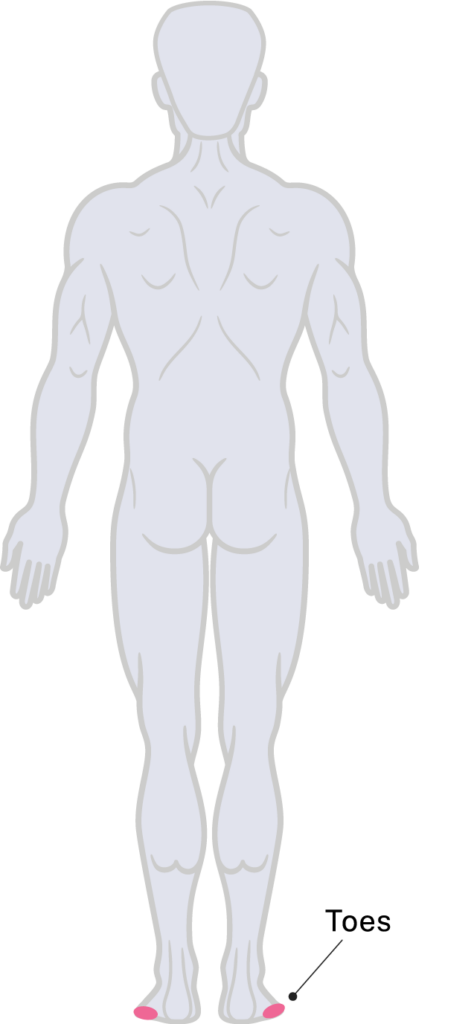Toes
Specific risks
Although not an area usually classed as a pressure injury, toes are at risk of physical injury. The wounds tend to be at risk of delayed healing due to impaired circulation in the lower extremities. If toe injuries deteriorate, it can lead to osteomyelitis resulting in possible amputation.
Other risks of injury are secondary to impaired sensation and can include fractures, scrapes and bruising from direct injuries. These include items being dropped on the toes or the toes being caught between the footplate and a firm surface.
Other contributing factors may include:
- heavy bedding and firm-fitting sheets on the bed
- no foot protection including no padding on metal or plastic footplates
- placement of the feet in relation to the footplates e.g. externally rotated legs
- person’s awareness of their environment in relation to their feet. This may be especially important with power drive chair use. Speed, miscalculation of the turning circle or delayed stopping and hitting objects increase the risk
- injuries during transfers such as contact with the mast and/or motor of a hoist or bumping the feet on other surfaces
- surfaces in the bathroom and the home such as under sink pipes or the base of cupboards
- contractures of the toes and forefeet leading to poor positioning of feet
- poor toenail care which can cause loss of nails and/or potential ingrown nail infections
- oedema and ill-fitting compression stockings
- These areas should be assessed by palpating for ‘boggy’, soft, or tender areas.

Management of breakdown
- Review causative factors such as home environment, footwear options, transfers, foot placement and range of motion in feet and toes.
- Remove compression stockings. Review oedema and management with a QSCIS and trained oedema therapist.
- Link with wound care or podiatry services ongoing. Toe wounds can be slow to heal due to being on the lower extremities where there is impaired circulation and/or oedema.
- Link with podiatry services regarding nail care. Educate support workers about the same.
- Closely monitor for infection and cellulitis. Screen and treat early, if suspected.
Check out other pressure injury locations and learn how to manage them.